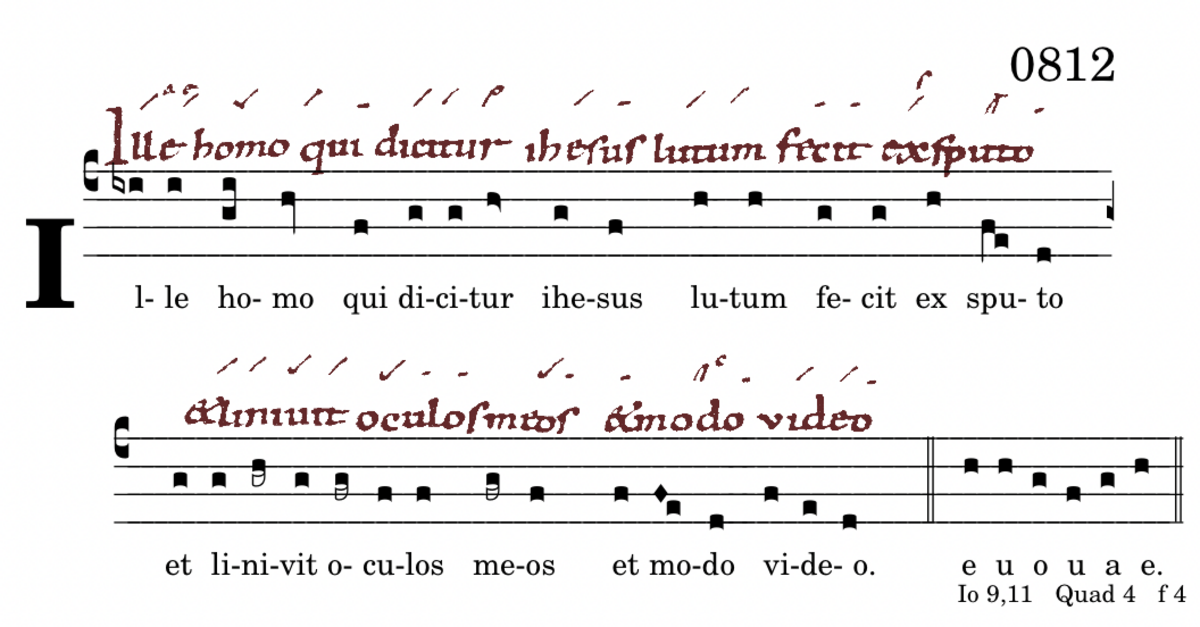🔘 IN GR TR AL OF CO xxxxx ✅ 2️⃣ 0️⃣ 3️⃣ 4️⃣ 5️⃣ 6️⃣ 7️⃣ 8️⃣ xxxxx AN RP IV alia
0812 AN Ille homo qui diciturModus 1
1MED typ ad „la“: colon
Verblüffend der Anfang der Antiphon mit 1MED typ mit „sa“, rhetorisch richtig: Die Antiphon setzt einen bereits laufenden Dialog zwischen den Nachbarn und dem Blindgeborenen fort. Der TerzPes ist gegenüber dem Normalfall einen Ton höher transponiert.
Die Quellenlage dazu ist aufschlussreich: die traditio frOc (MR + Wc) beschönigt die Situation indem sie den ersten Ton zum „la“ senkt. Lc wandert in den DT aus, in Ka schlägt die do-Revision voll zu. Nur Tol entspricht den Neumen von H.
 1MED triv 1acc
1MED triv 1acc
1MED triv 2acc
1NOV typ
Der an sich dreiakzentige Text wird als einakzentig vertont: „et li-ní-vit oculuos meos“, ohne die beiden anderen Akzent zu vernachlässigen.
2INC cad
Der Cento verzichtet zweimal auf die Clv. Das gibt den Text eine verblüffende Wendung, die man nur als bescheiden, frech beschreiben kann.
● Der Mann den man Jesus nennt, machte einen Teig aus Spucke
und bestrich meine Augen und seither (auf die Weise) sehe ich.
● The man called Jesus made a paste of spittle
and coated my eyes, and since then I have seen.
1MED typ ad „la“: colon
The beginning of the antiphon with 1MED type with „sa“ is astonishing, rhetorically correct: the antiphon continues an already ongoing dialogue between the neighbours and the blind man. The thirdPes is transposed a tone higher than in the normal case.
The source situation is revealing: the traditio frOc (MR + Wc) glosses over the situation by lowering the first note to „la“. Lc migrates into the DT, in Ka the do revision takes full effect. Only Tol corresponds to the neumes of B.
 1MED triv 1acc
1MED triv 1acc
1MED triv 2acc
1NOV typ
The three-accent text is set to a single accent: „et li-ní-vit oculuos meos“, without neglecting the other two accents.
2INC cad
The cento omits the clv twice, giving the text an intriguing twist that can only be described as modest, cheeky.

